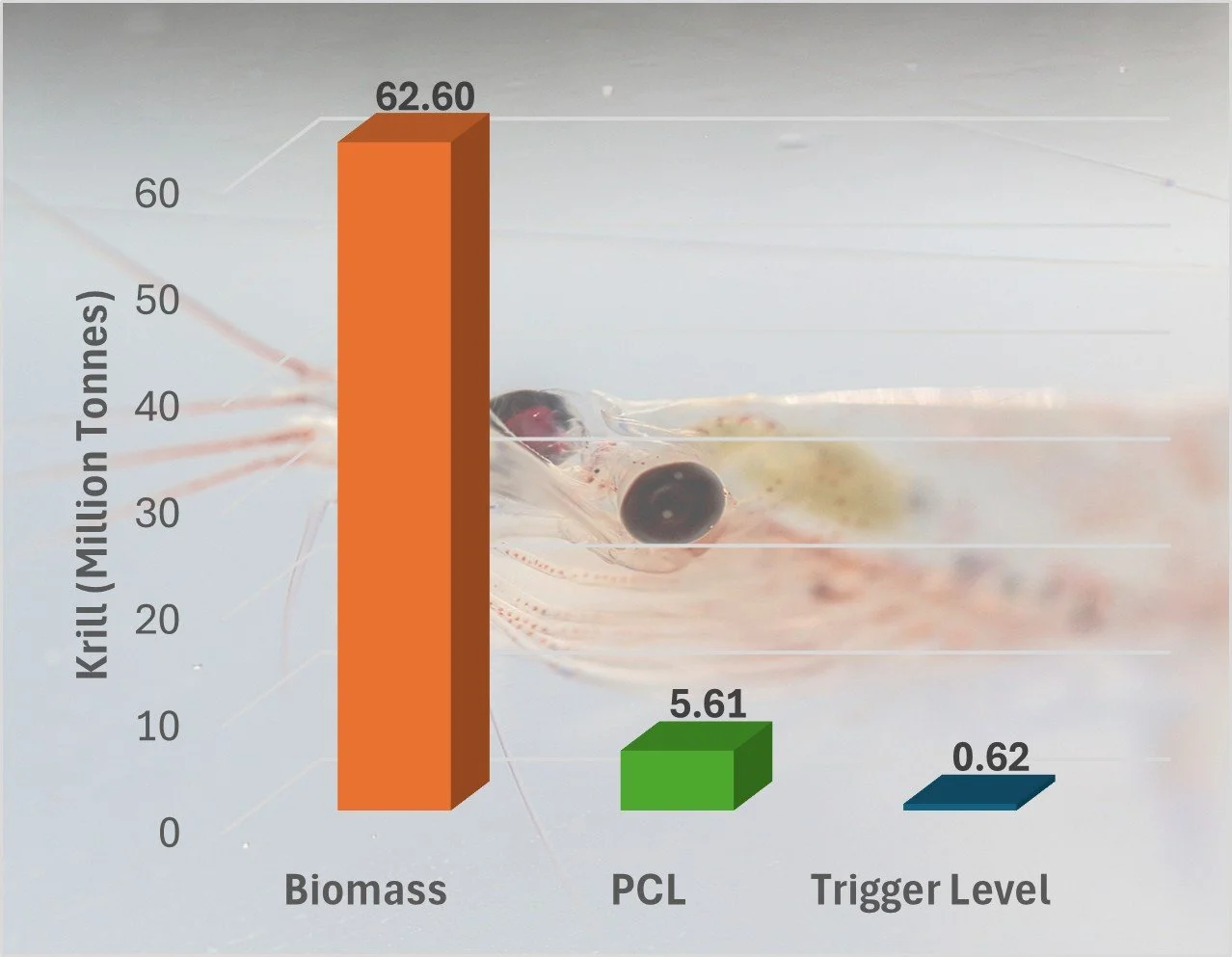All time high krill catches and the regulatory and voluntary measures that ensure precaution
The Antarctic krill fishery made headlines this season when, for the first time, the annual catch reached 620,000 tonnes, triggering an early closure of the fishery on 1 August. What does this really mean?
A precautionary trigger, krill is still underutilized
Catch levels have been steadily increasing for more than a decade. Reaching the ‘trigger level’ was only a matter of when. Importantly, the trigger is not the maximum allowable catch. It is an extra precaution built into CCAMLR’s management system, representing just 11% of the Precautionary Catch Limit (PCL) of 5.61 million tonnes for Area 48. By global standards, the krill fishery remains underfished, and the early closure showed that the CCAMLR governance system works as intended: when the limit is reached, fishing stops, and vessels leave the area.
Debate over concentrated fishing
There is no metric on fishing concentration, and it is unclear if observed concentration has any impact, but still much of the debate this year has focused on the lapse of Conservation Measure 51-07, which previously distributed the trigger level across different subareas. Without it, some feared the entire trigger level might be harvested from one region—especially near predator foraging grounds.
That scenario did not happen. To avoid it, ARK members took several voluntary steps at the start of the season:
· Maintain operational patterns as previous years, commencing fishing in Subarea 48.2 before moving into Subarea 48.1.
· Implementing ARK Voluntary Restricted Zones (VRZs) around major penguin colonies in Subarea 48.1.
However, early in the season, extensive sea-ice conditions prevented fishing in Subarea 48.2, forcing the fleet to begin operations in Subarea 48.1. Once sea-ice conditions improved, vessels moved as planned into Subarea 48.2, thereby maintaining the overall precautionary approach.
Distribution in practice
The outcome confirmed these safeguards had real effects. This season, catches were almost evenly divided: 57.5% in Subarea 48.1 (357,961 tonnes) and 41.7% in Subarea 48.2 (259,640 tonnes). Within Subarea 48.1, fishing was further spread across three main grounds, rather than concentrated in one hotspot. At the same time, ARK members upheld the important voluntary measures (VRZs) to protect penguin foraging areas during breeding.
Looking ahead
While the trigger level was reached for the first time in 2025, the closure reflects the precautionary design of CCAMLR’s system, not overexploitation. Still, ARK recognizes that stronger long-term tools are needed. That is why the association is urging CCAMLR to adopt the revised Krill Fishery Management Approach (KFMA) without delay. Starting with Subarea 48.1, the KFMA would bring more predictable, spatially distributed management and reinforce CCAMLR’s credibility as the global standard for multilateral ecosystem-based governance.
For now, the 2025 season demonstrated that voluntary measures can bridge regulatory gaps. By spreading fishing effort, protecting sensitive areas, and respecting closure rules, ARK’s members showed that precautionary, science-based management remains at the core of the krill fishery.
What is the KFMA?
The Krill Fishery Management Approach (KFMA) is a long-term management framework developed by CCAMLR scientists to replace the current “trigger level” system. Instead of relying on a single catch cap for the entire fishing area, the KFMA would distribute catches more precisely across smaller management units, aligned with predator foraging grounds and ecosystem dynamics. It combines catch limits with monitoring data to ensure that fishing activity remains sustainable even as environmental conditions change. After years on the developing, the KFMA is now ready for phased implementation—beginning with Subarea 48.1—before expanding across the entire krill fishing region.




